· 9 min read
7 Balance-Boosting Exercises for Seniors to Reduce Risk of Falls
Maintaining balance is important to reduce the risk of falls to seniors. Here, we will explore the 7 balance-boosting exercises specifically designed for them.
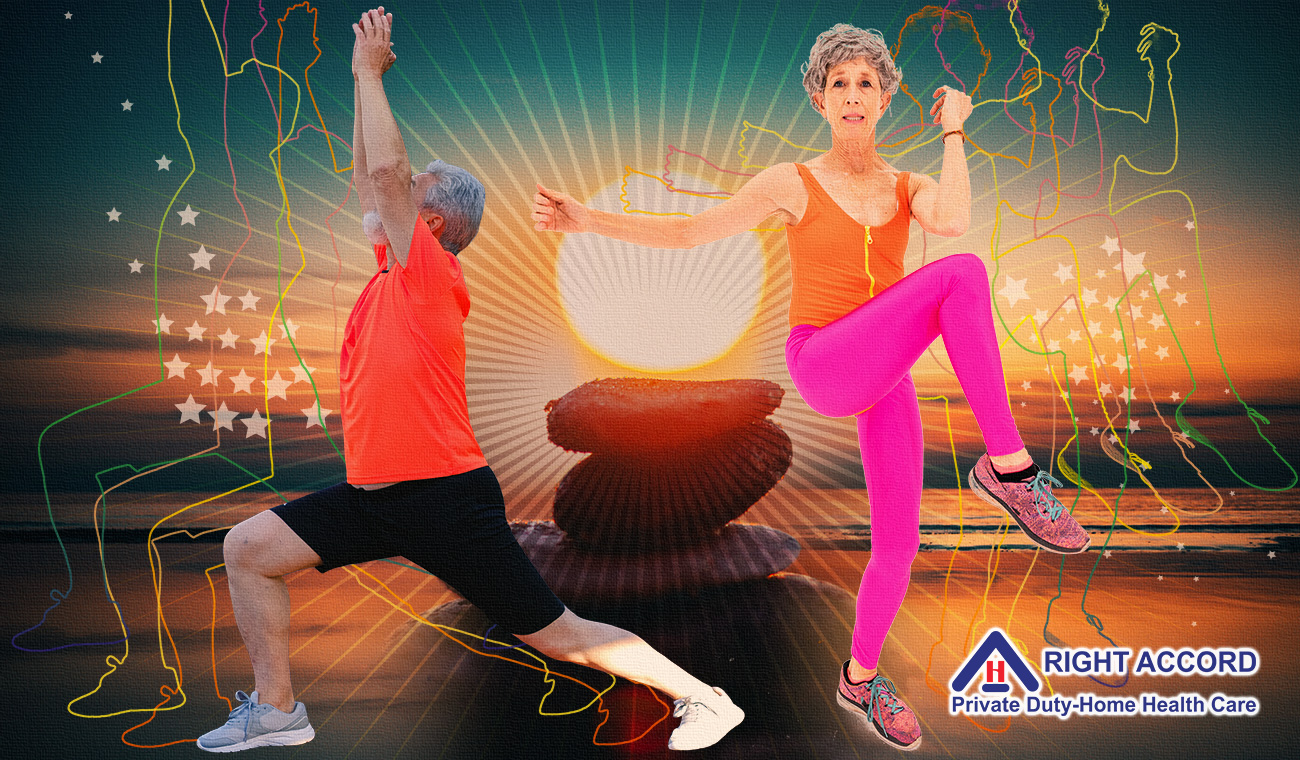
By: Rosemarie Tamunday Casanova — RN, BSN, MHA
As we age, maintaining balance becomes crucial to reduce the risk of falls and preserve our independence. Thankfully, there are numerous exercises that can help seniors improve balance and stability, allowing them to age gracefully and confidently. In this article, we will explore the top seven balance-boosting exercises specifically designed for seniors.
Regular exercise not only strengthens muscles but also enhances coordination, flexibility, and overall physical well-being. By incorporating these exercises into your routine, you can enhance your body’s balance and stability, reducing the likelihood of falls. From yoga and tai chi to simple leg lifts and heel-to-toe walks, these exercises target key muscles and improve posture, ensuring you stay steady on your feet.
So, whether you’re an active senior looking to maintain balance or a caregiver seeking ways to help your loved ones, these exercises are perfect for all ages. Achieve the confidence and mobility you desire while aging gracefully with these top seven balance-boosting exercises for seniors.
The Importance of Balance for Seniors
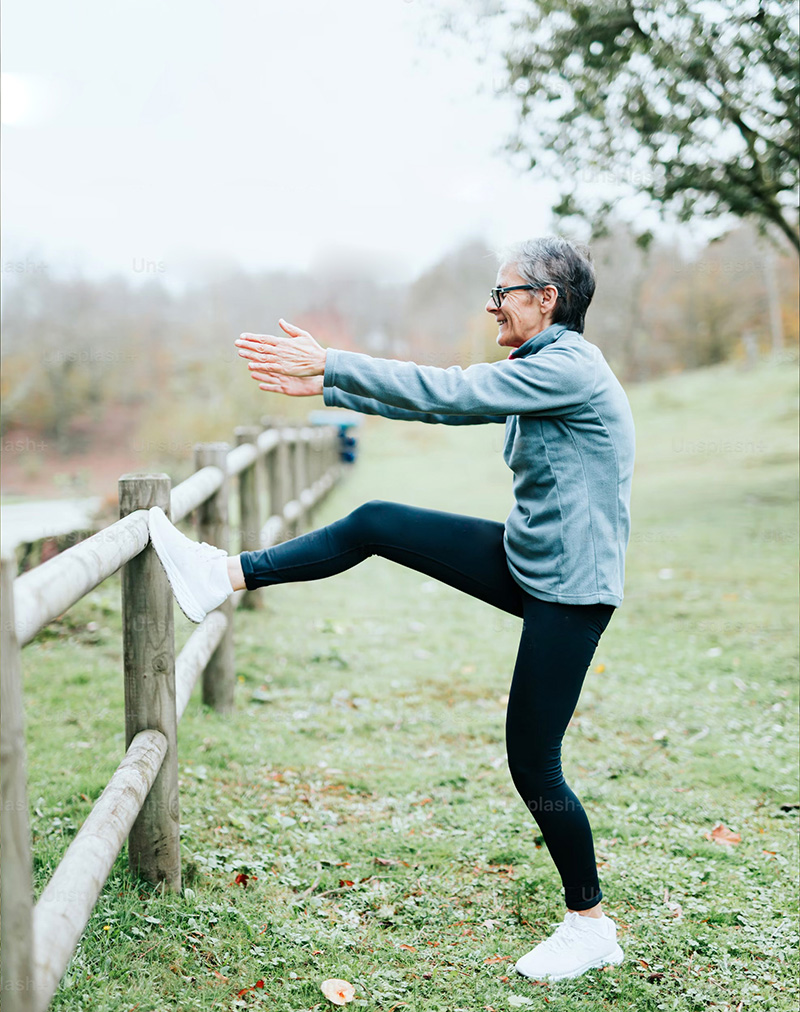
Maintaining balance is crucial for seniors as it directly affects their quality of life and independence. As we age, our sense of balance naturally declines, making us more prone to falls and injuries.
According to the Centers for Disease Control and Prevention (CDC), falls are the leading cause of fatal and non-fatal injuries among older adults. However, by incorporating balance-boosting exercises into our daily routines, we can significantly reduce the risk of falls and maintain our mobility.
Aging gracefully involves maintaining physical health and well-being, and balance is a vital component of that equation. Good balance enables us to perform everyday tasks safely, such as walking, climbing stairs, and reaching for objects. It also allows us to engage in leisure activities and maintain an active lifestyle. By focusing on balance exercises, seniors can improve their overall stability and reduce the fear of falling, thereby increasing their confidence and independence.
To address balance concerns, it is important to understand the common causes of falls in seniors.
Common Causes of Falls in Seniors
Falls can occur due to a variety of factors, and identifying these causes can help seniors and their caregivers take preventative measures. Some common causes of falls in seniors include:
- Muscle weakness: Age-related muscle loss can lead to weakness, making it harder to maintain balance.
- Poor vision: Declining eyesight can make it difficult to navigate surroundings and spot potential hazards.
- Medication side effects: Certain medications can cause dizziness or lightheadedness, increasing the risk of falls.
- Chronic conditions: Conditions such as arthritis, Parkinson’s disease, and stroke can affect balance and coordination.
- Environmental hazards: Obstacles, slippery surfaces, poor lighting, and uneven flooring can contribute to falls.
By understanding these causes, seniors and their caregivers can take proactive steps to reduce the risk of falls. One of the most effective approaches is through regular exercise.
Benefits of Exercise for Balance Improvement
Exercise offers numerous benefits for seniors, particularly when it comes to balance improvement. Regular physical activity not only strengthens muscles but also enhances coordination, flexibility, and overall physical well-being. When it comes to balance, exercise helps in the following ways:
- Muscle strength: Strengthening the muscles in the legs and core improves stability and reduces the risk of falls.
- Coordination and flexibility: Exercises that involve coordination and flexibility, such as yoga and tai chi, enhance balance and body awareness.
- Posture improvement: Specific exercises can help improve posture, ensuring proper alignment and reducing the risk of falls.
- Confidence and independence: By improving balance, seniors gain confidence in their ability to perform daily activities and maintain their independence.
- Overall well-being: Regular exercise boosts mood, reduces stress, and improves overall physical and mental health.
By incorporating balance-boosting exercises into their routine, seniors can experience these benefits and reduce the likelihood of falls. Let’s explore the top seven exercises specifically designed to improve balance in seniors.
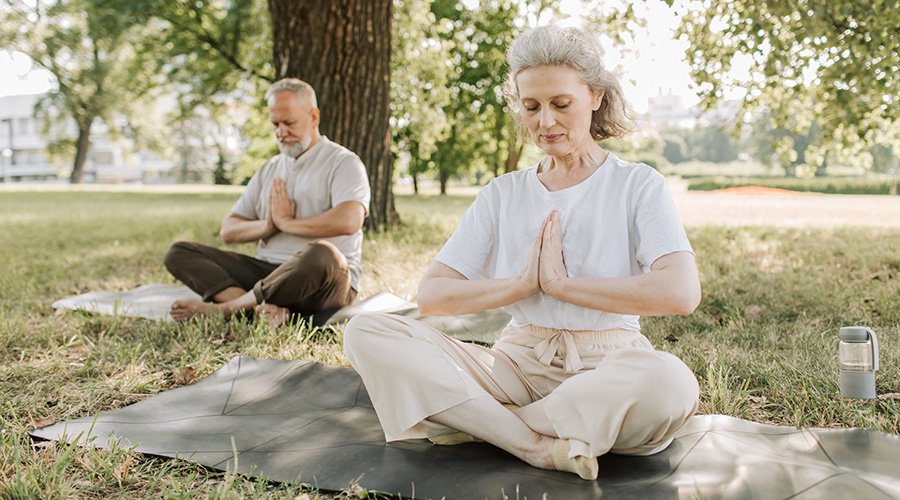
Photo by Vlada Karpovich on Pexels
Top 7 Balance-Boosting Exercises for Seniors
1. Yoga
Yoga is a gentle and effective practice that improves balance, flexibility, and strength. Poses such as Tree Pose, Warrior Pose, and Mountain Pose target key muscles and promote stability. Joining a senior-friendly yoga class or following online tutorials can help seniors incorporate yoga into their routine.
2. Tai Chi
Tai Chi is a martial art form that focuses on slow, controlled movements and deep breathing. It improves balance, coordination, and mindfulness. Tai Chi classes designed for seniors are widely available and can provide a safe and supportive environment for learning.
3. Leg Lifts
Simple leg lifts can be performed while standing or sitting. Lift one leg to the side, front, or back while maintaining stability. This exercise targets the muscles in the legs and hips, improving balance and strength.
4. Heel-to-Toe Walks
This exercise involves walking in a straight line, placing the heel of one foot directly in front of the toe of the other foot with each step. Heel-to-toe walks challenge balance and coordination, making them an effective exercise for seniors.
5. Standing on One Leg
Stand near a wall or sturdy chair for support and lift one leg off the ground. Hold the position for a few seconds, then switch legs. This exercise improves balance and strengthens the muscles in the legs and core.
6. Chair Squats
Begin by sitting in a chair with feet hip-width apart. Stand up without using your hands, then slowly lower yourself back down. Chair squats help strengthen the muscles in the legs and improve stability.
7. Balancing Exercises
Various balancing exercises can be incorporated into a routine to improve stability. Examples include standing on a foam pad or pillow, or using a balance board or stability ball. These exercises challenge the body’s balance systems and promote improved stability over time.
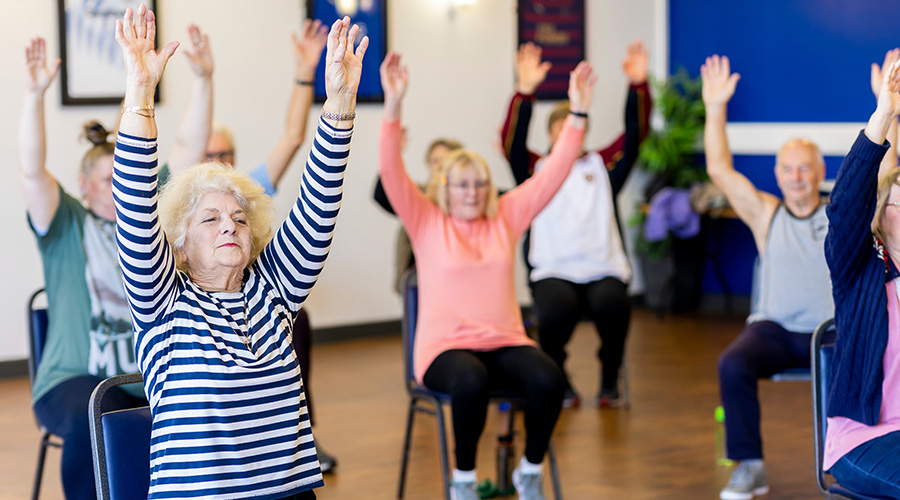
Photo by CFAB on Pexels
Exercise Safety Tips for Seniors
While exercise is beneficial for seniors, it is important to prioritize safety. Before starting any exercise program, it is advisable to consult with a healthcare professional. Additionally, consider the following safety tips:
- Start Slowly: Begin with exercises that are appropriate for your fitness level. Gradually increase intensity and duration as your strength and balance improve.
- Use Proper Equipment: Wear comfortable and supportive footwear that provides good traction. Use assistive devices like canes or walkers if needed.
- Stay Hydrated: Drink plenty of water before, during, and after exercise to avoid dehydration.
- Warm Up and Cool Down: Always start with a gentle warm-up to prepare your muscles and joints for exercise. Finish with a cool-down to gradually lower your heart rate.
- Pay Attention to Your Body: Listen to your body and modify or stop exercises if you experience pain or discomfort. It is normal to feel challenged, but pushing beyond your limits can increase the risk of injury.
By following these safety tips, seniors can exercise with confidence and reduce the risk of falls.
Incorporating Balance Exercises into a Daily Routine
To reap the benefits of balance exercises, it is important to incorporate them into a daily routine. Here are some tips for doing so:
- Set a Schedule: Designate specific times for exercise each day to ensure consistency.
- Mix it Up: Incorporate a variety of balance exercises to target different muscle groups and keep your routine interesting.
- Make it Fun: Engage in activities such as dancing, gardening, or swimming that naturally promote balance and coordination.
- Buddy Up: Exercise with a friend or join a group class to stay motivated and accountable.
- Track Your Progress: Keep a record of your exercises and track your progress over time. Celebrate milestones and improvements to stay motivated.
By making balance exercises a part of your daily routine, you can maintain and improve your stability, reducing the risk of falls as you age.

Photo by Yan Krukau on Pexels
Other Strategies to Prevent Falls in Seniors
In addition to exercise, there are other strategies seniors can implement to prevent falls and maintain their safety:
- Home Safety: Remove clutter, secure loose rugs, install grab bars in bathrooms, improve lighting, and address any other potential hazards in the home.
- Regular Eye Exams: Schedule regular eye exams to ensure optimal vision and address any vision-related concerns.
- Medication Review: Consult with a healthcare professional to review medications and identify any that may increase the risk of falls.
- Healthy Lifestyle: Maintain a healthy diet, stay hydrated, get enough sleep, and avoid excessive alcohol consumption.
- Regular Check-ups: Schedule regular check-ups with your healthcare provider to address any concerns and monitor your overall health.
By combining exercise with these strategies, seniors can take a comprehensive approach to fall prevention and maintain their independence.
Resources for Seniors to Find Balance Exercise Programs
If you’re a senior looking to find balance exercise programs, several resources can assist you in your journey:
- Local Community Centers: Check with your local community center or senior center for fitness classes specifically designed for seniors.
- Senior Fitness Centers: Some fitness centers offer specialized programs and classes tailored to seniors’ needs.
- Online Resources: Explore online platforms that provide exercise routines and tutorials specifically designed for seniors.
- Physical Therapists: Consult with a physical therapist who can create a personalized exercise program based on your specific needs and abilities.
- Senior Organizations: National organizations like the National Council on Aging (NCOA) and the American Association of Retired Persons (AARP) offer resources and information on exercise programs for seniors.
Remember, it’s never too late to start incorporating balance exercises into your routine. With the right resources and guidance, you can improve your stability, reduce the risk of falls, and age gracefully.
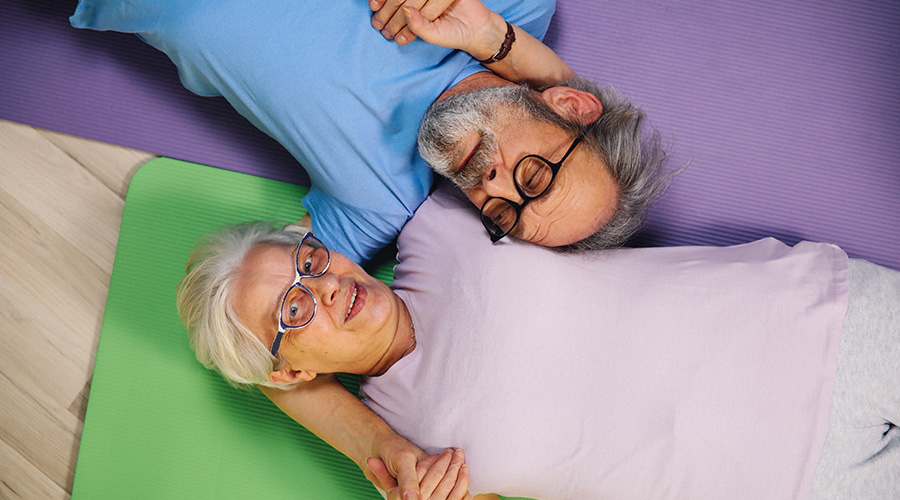
Photo by T Leish on Pexels
Conclusion: Maintaining Balance as We Age
Maintaining balance is crucial for seniors to reduce the risk of falls and preserve their independence. By incorporating balance-boosting exercises into their routine, seniors can improve stability, strengthen key muscles, and enhance overall well-being. From yoga and tai chi to leg lifts and heel-to-toe walks, these exercises target specific areas and promote better balance.
Exercise alone cannot prevent falls entirely, so it is essential to combine it with other strategies such as home safety modifications, regular eye exams, and medication reviews. By taking a comprehensive approach to fall prevention, seniors can maintain their safety and independence as they age.
Remember, it’s never too late to start prioritizing balance and incorporating these exercises into your routine. Whether you’re a senior or a caregiver, these exercises will help you or your loved ones age gracefully and confidently, maintaining balance and reducing the risk of falls. Embrace the journey towards better balance and enjoy the benefits it brings to your overall well-being.



